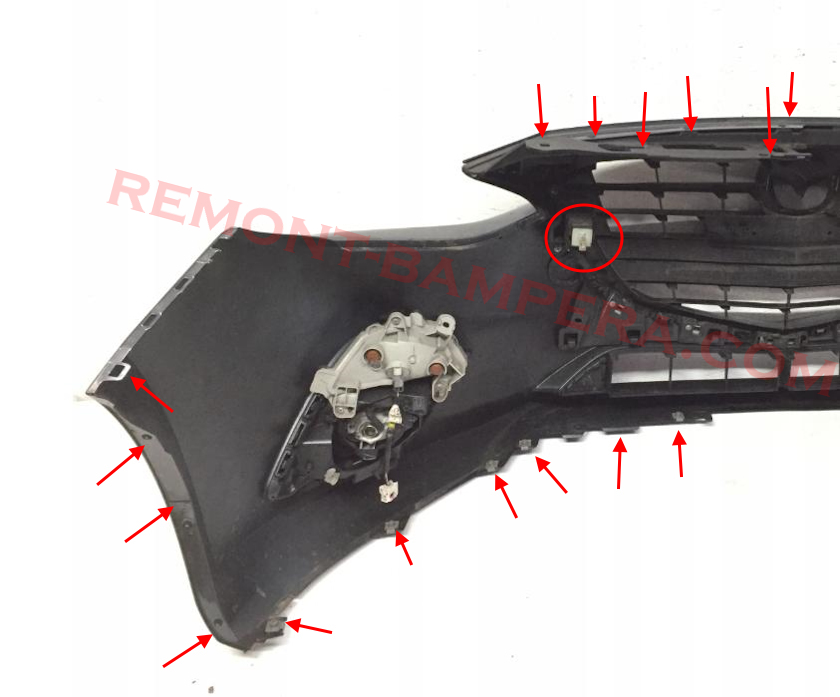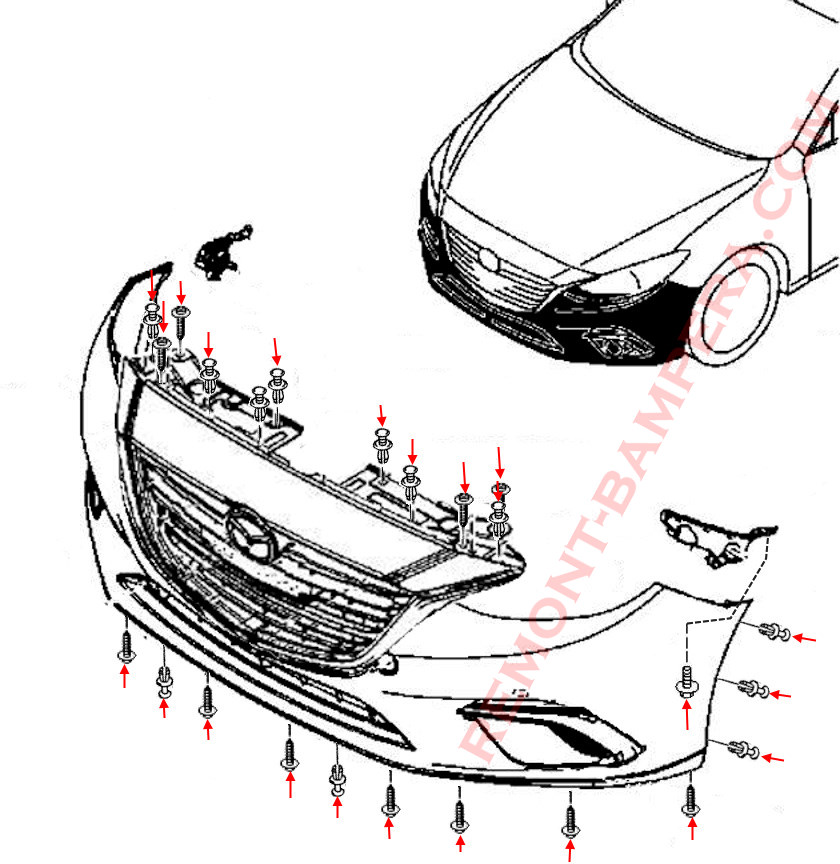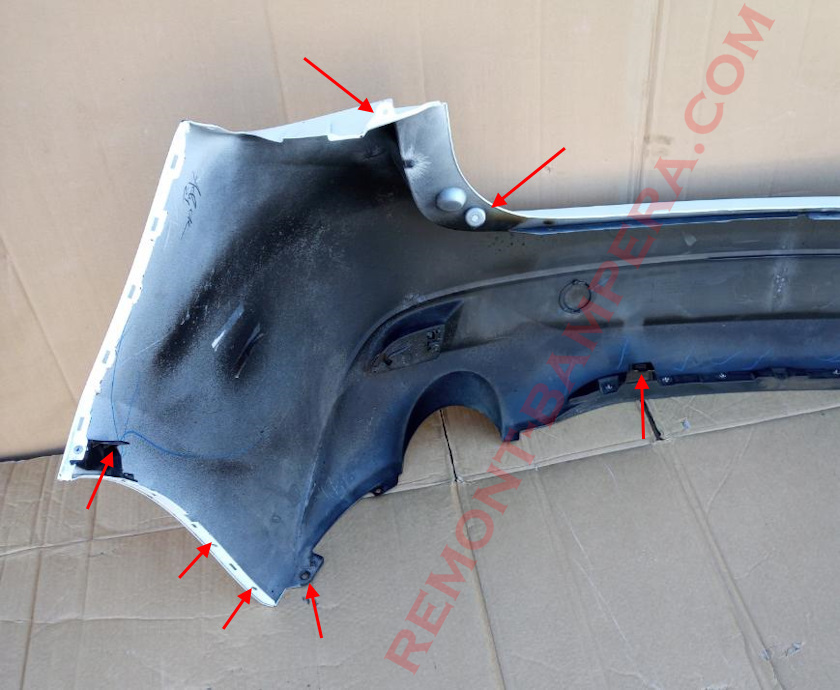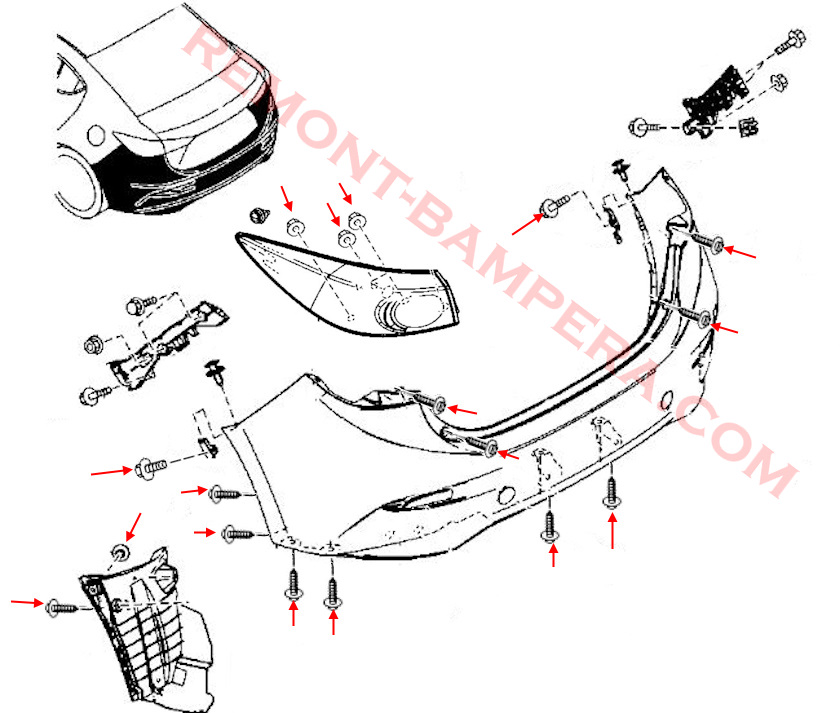Compact yet charismatic - this is how you can describe the third-generation Mazda 3 produced between 2013 and 2019. This model marked an important milestone for Mazda: it debuted the KODO: Soul of Motion design and Skyactiv technology that delivered excellent dynamics and efficiency. Let's see what made it memorable.
Production Years and Model Codes
The third-generation Mazda 3 (known by codes BM for sedans, BN for hatchbacks, and BY for the 2016-2019 facelift) was launched in June 2013 as a replacement for the Mazda 3 BL. It received a facelift in 2016 and was replaced by the fourth generation (BP) in 2019.
Body Types and Versions
As before, the Mazda 3 was offered in two body styles:
- Sedan (BM/BY) - classic three-box design with spacious trunk (408 liters)
- Hatchback (BN/BY) - more sporty, with shorter rear end and dynamic silhouette
The hatchback was more popular in Europe and Russia, while the sedan was preferred in the U.S. and Asia.
2016 Facelift
The updated model (code BY) received:
- New radiator grille (like the CX-5)
- LED headlights and daytime running lights
- Redesigned dashboard (digital in some versions)
- Improved sound insulation
- Updated multimedia system (MZD Connect with Apple CarPlay and Android Auto, only in later versions)
Engines and Transmissions
The Mazda 3 BM/BN/BY featured Skyactiv engines that combined power and efficiency:
- Gasoline:
- 1.5 (100-120 HP) - base engine, ideal for city driving
- 2.0 (120-165 HP) - most popular version, well-balanced
- 2.5 (184-194 HP) - mainly for U.S. and Australian markets
- Diesel (Europe):
- 2.2 (150 HP) - powerful and economical, but demanding on fuel quality
Transmissions:
- 6-speed manual - precise and "sporty"
- 6-speed automatic - smooth with quick shifts
Front-wheel drive only (unlike previous generations, all-wheel drive wasn't offered).
Bumper Plastic Marking: >PP-(T25+S20)<
How to Remove the Front Bumper
- Lift and secure the hood
- Remove two screws from the air intake (there's a hidden clip under the intake)
- Remove four screws and seven clips (top to bottom) securing the upper part of the bumper (radiator grille)
- Underside: remove ten screws and two clips (bottom to top) securing the fender liners and lower trim
- Turn the front wheels inward
- In wheel arches, remove three clips per side securing the front fender liners
- Move fender liners aside and remove one bolt per side (8 mm, bottom to top) securing the corners to fenders
- Release the clips in the fenders (pull the corners toward you)
- With assistance, remove the front bumper by pulling forward (it's held by guide elements, marked in red in the image)
- Disconnect electronic component connectors (if present)


How to Remove the Rear Bumper
The mounting is identical for sedan and hatchback.
- Open the trunk
- Remove two screws in the trunk opening
- Release edges of trim pieces (to access rear light clusters)
- Behind side trim pieces, remove three nuts per side, disconnect wiring and remove taillights (note: lights are held by plastic fasteners - pull straight back)
- Below taillights, remove one screw per side securing the upper bumper
- Underside: remove six screws (bottom to top) securing the lower part
- (Easier with wheels removed or rear end lifted) In wheel arches, remove fender liner screws and one clip per side
- Move fender liners aside and remove one screw per side securing the bumper sides
- Release clips in fenders (pull the corners)
- (Requires two people) Remove bumper by pulling backward (watch for wiring)
- Disconnect electrical connectors


Design and Interior
The Mazda 3 BM/BN was the first model with KODO design: aggressive grille, dynamic lines, and sporty lighting. After the 2016 facelift, the design became even more expressive.
The interior stood out with quality materials (soft-touch plastics, aluminum accents) and good ergonomics. Top versions offered:
- Leather upholstery
- Heated seats and steering wheel
- Head-Up display
- Bose audio system
- 360-degree camera
Technology and Safety
The third generation earned 5 Euro NCAP stars thanks to:
- i-ACTIVSENSE (adaptive cruise control, blind spot monitoring)
- Automatic emergency braking
- Lane departure warning
It also debuted the MZD Connect system with rotary controller (similar to BMW's iDrive).
Interesting Facts
- Hybrid version? No, Mazda focused on Skyactiv gasoline engines
- No Mazda 3 MPS. Unlike the second generation, there was no performance version
- Nearly premium. In quality and driving dynamics it competed with BMW 1 Series and Audi A3, while being more affordable
- Different names. In Japan it was called Axela, but kept the Mazda 3 name internationally
- Sporty suspension. Even base versions offered agile handling
Conclusion: Why is the Mazda 3 BM/BN/BY Still Popular?
This model proved that a compact car can be stylish, technological, and fun to drive. Used third-generation Mazda 3s remain valued for their reliability, efficiency, and design. If you're looking for a car with character, it's definitely worth considering.

 English
English  Italiano
Italiano  Français
Français  русский
русский  Deutsch
Deutsch  Español
Español